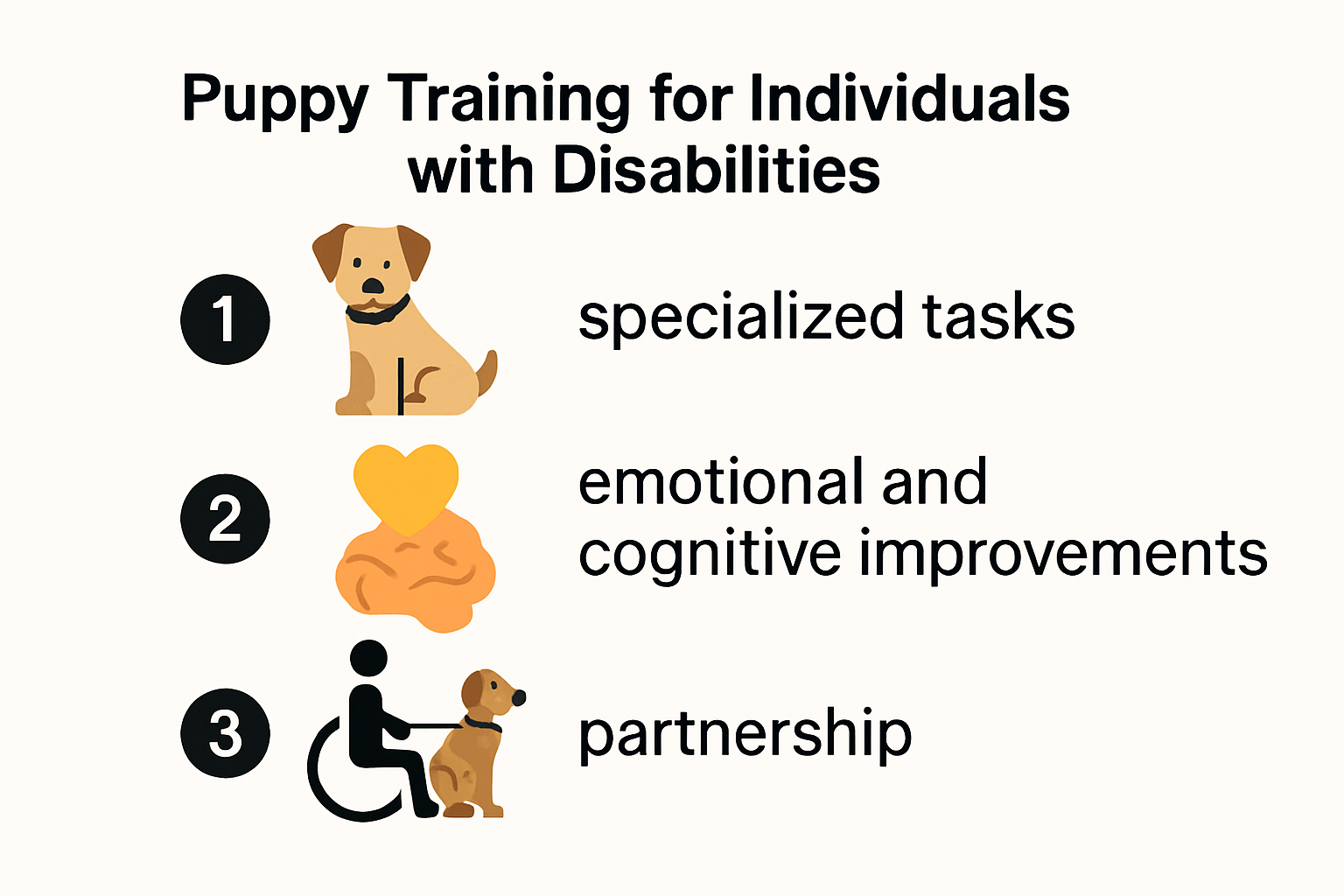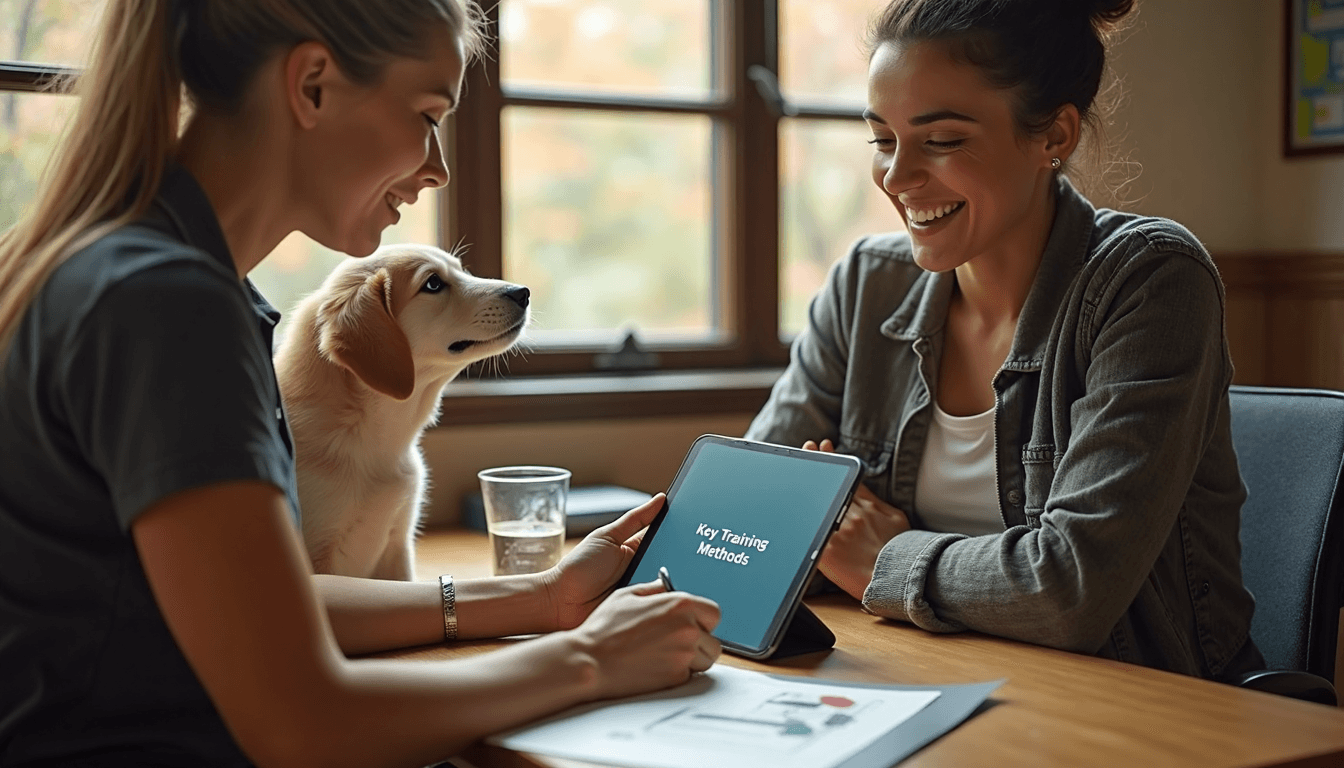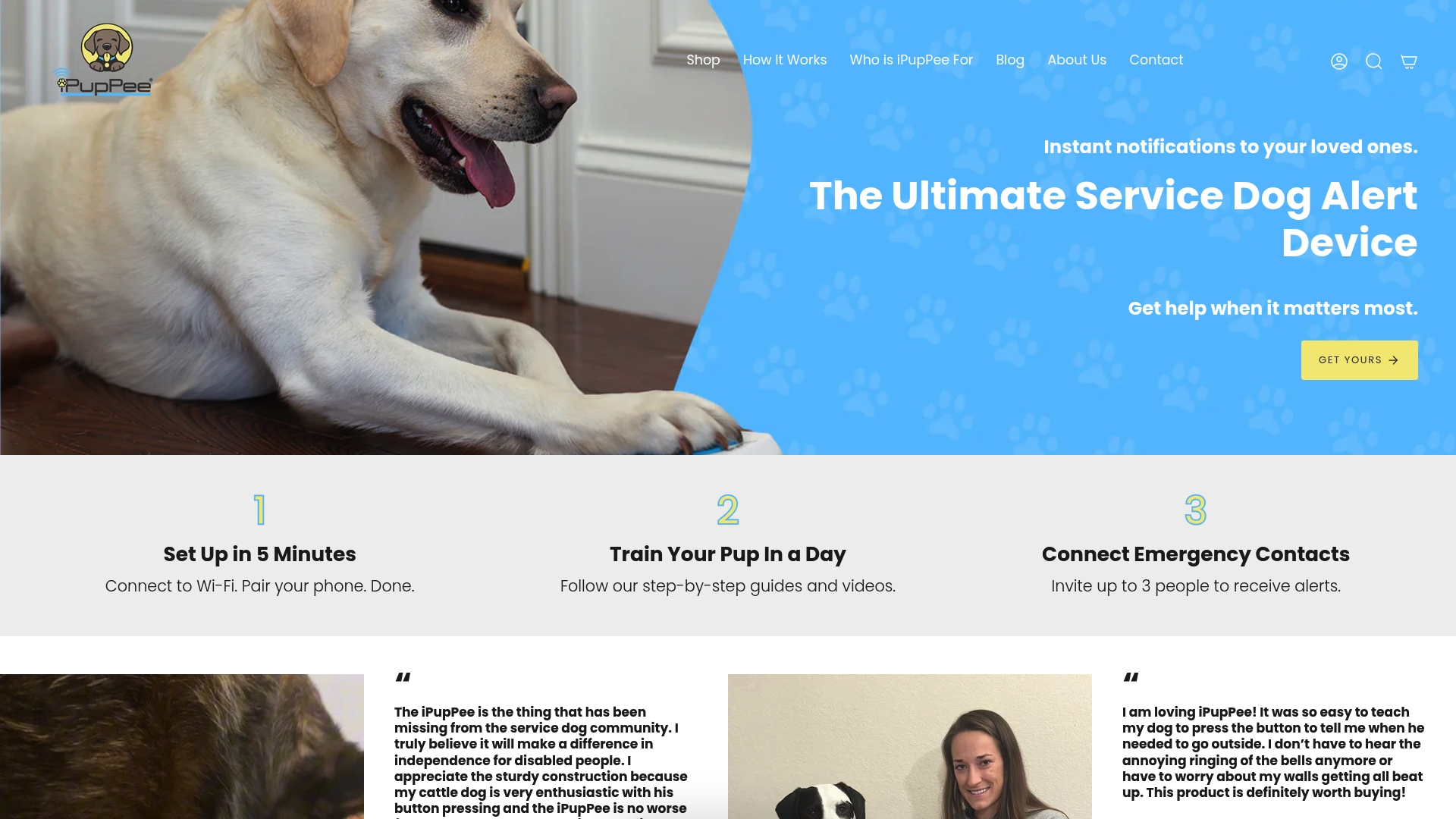
Puppy training for people with disabilities is changing lives in ways most never imagined. According to research, children with developmental disabilities who trained with dogs saw a noticeable boost in physical activity and engagement. Here’s the twist. The biggest breakthroughs are not just about the commands dogs learn but about the deep partnerships and independence that grow with every session. Curious how specialized puppy training is crafting new paths for support and confidence in 2025? Let’s see what matters most.
Table of Contents
- Understanding Puppy Training For Disabilities
- The Critical Role Of Specialized Training
- Cognitive And Developmental Benefits
- Comprehensive Approach To Training
- Key Training Methods And Adaptive Tools
- Customized Training Techniques
- Adaptive Technology And Communication Tools
- Holistic Training Approach
- Supporting Different Disabilities In Dogs And Owners
- Tailored Training For Specific Disability Needs
- Comprehensive Support Through Professional Preparation
- Individualized Training Strategies
- Best Practices For Service Dogs And Handlers
- Training Standards And Skill Development
- Positive Reinforcement And Emotional Connection
- Ongoing Support And Continuous Learning
Quick Summary
| Takeaway | Explanation |
|---|---|
| Specialized Training is Essential | Training puppies for individuals with disabilities requires tailored approaches that focus on specific needs, including mobility assistance and sensory support. |
| Holistic Approaches Improve Outcomes | Integrating cognitive, emotional, and behavioral training can significantly enhance the bond between the dog and handler, providing greater support and independence. |
| Customized Techniques Yield Better Engagement | Custom training methods, such as sensory-based learning and task-specific skills, can boost motivation and improvement for individuals with disabilities. |
| Ongoing Learning is Crucial | Regular training refreshers, continuous adaptation, and professional assessments are vital to maintaining the effectiveness of service dog partnerships over time. |
Understanding Puppy Training for Disabilities

Puppy training for individuals with disabilities represents a specialized approach to developing communication, support, and independence through strategic canine education. This process goes beyond traditional dog training, focusing on creating meaningful partnerships that enhance the quality of life for people facing various physical, cognitive, and emotional challenges.
The Critical Role of Specialized Training
Training puppies for individuals with disabilities requires a nuanced understanding of both human needs and canine capabilities. Research from Oregon State University highlights the transformative potential of these training programs. Their 2024 study revealed that children with developmental disabilities who participated in regular dog training sessions experienced significant improvements in physical activity and engagement.
The training process involves teaching puppies specific skills tailored to their handler’s unique requirements. This might include mobility assistance, sensory support, emotional regulation, or task-specific interventions. Unlike standard obedience training, these programs focus on creating intuitive communication channels between the dog and its handler.
Cognitive and Developmental Benefits
A clinical study published in PubMed demonstrated remarkable cognitive improvements for individuals with intellectual disabilities through dog-assisted training programs. The 20-week program showed significant enhancements in areas such as attention, visuomotor coordination, and social interaction.
Key training objectives often include:
- Precise Task Execution: Teaching dogs to respond to specific commands
- Sensory Awareness: Developing dogs’ ability to recognize and respond to handler’s unique signals
- Emotional Attunement: Creating strong, responsive bonds that support emotional well-being
Comprehensive Approach to Training
Research indicates that early socialization and training at approximately four months of age can prevent potential behavioral challenges. This early intervention is crucial for puppies destined to support individuals with disabilities.
The training process requires a holistic approach that considers both the dog’s capabilities and the specific needs of the handler. Professional trainers specializing in disability support work closely with both the puppy and the individual to create a seamless, supportive partnership. Learn more about comprehensive service dog training strategies.
Understanding puppy training for disabilities is not just about teaching commands. It’s about creating a dynamic, responsive relationship that empowers individuals to navigate their world with greater confidence and independence. Each training journey is unique, reflecting the individual needs and capabilities of both the dog and its handler.
Key Training Methods and Adaptive Tools

Training puppies for individuals with disabilities demands specialized approaches that go beyond traditional obedience techniques. These methods focus on creating adaptive, responsive partnerships that enhance independence and support unique individual needs.
Customized Training Techniques
Research from Frontiers in Psychology highlights the transformative potential of specialized training interventions. Systematic reviews demonstrate that tailored training approaches can significantly boost intrinsic motivation, particularly for individuals with developmental challenges.
Key customized training techniques include:
- Sensory-Based Learning: Developing training protocols that engage multiple sensory pathways
- Task-Specific Skill Development: Teaching precise actions matched to individual handler requirements
- Progressive Complexity Training: Gradually increasing task difficulty to build confidence and competence
Below is a table summarizing the most common customized training techniques and their targeted benefits for individuals with disabilities.
| Training Technique | Description | Targeted Benefits |
|---|---|---|
| Sensory-Based Learning | Uses multiple sensory cues in training | Improves communication & focus |
| Task-Specific Skill Development | Teaches actions tailored to handler’s needs | Boosts independence and safety |
| Progressive Complexity Training | Gradually increases task difficulty | Builds confidence and competence |
| Emotional Attunement | Strengthens emotional connection between dog & handler | Supports emotional well-being |
Adaptive Technology and Communication Tools
A study by Oregon State University revealed that integrating specialized tools can dramatically improve training outcomes. Adaptive technologies help bridge communication gaps between handlers and their support dogs.
Innovative tools in this space include:
- Specialized harnesses with integrated communication buttons
- Pressure-sensitive vest indicators
- Motion-responsive training devices that provide immediate feedback
Holistic Training Approach
Clinical research published in PubMed emphasizes the importance of a comprehensive training methodology. This approach considers not just command execution but also emotional attunement and cognitive development.
Successful training programs typically incorporate:
- Regular assessment of both dog and handler progress
- Flexible training protocols adaptable to changing needs
- Ongoing support and professional guidance
Check out our comprehensive guide to advanced dog training techniques to understand the nuanced science behind effective puppy training for disabilities.
Ultimately, key training methods and adaptive tools are about creating a dynamic, responsive partnership. Each training journey is unique, requiring patience, understanding, and a commitment to building mutual trust and communication.
Supporting Different Disabilities in Dogs and Owners
Supporting individuals with diverse disabilities requires a nuanced and personalized approach to dog training that recognizes the unique challenges and needs of each handler. This complex process involves developing specialized skills that go far beyond standard obedience training.
Tailored Training for Specific Disability Needs
Research from professional service dog organizations indicates that comprehensive service dog training typically requires at least 120 hours of dedicated instruction. Of these hours, approximately 30 are specifically focused on public setting behaviors, task-specific skills, and nuanced communication techniques.
Different disabilities demand distinct training approaches:
- Mobility Assistance: Teaching dogs to provide physical support, retrieve items, open doors
- Sensory Support: Training dogs to recognize and respond to auditory or visual cues
- Neurological Support: Developing skills to interrupt repetitive behaviors or provide grounding during challenging moments
The following table gives an overview of common disability types and the specialized training focus for each, as discussed above.
| Disability Type | Specialized Training Focus | Example Skills Taught |
|---|---|---|
| Mobility Assistance | Physical support, retrieving items, opening doors | Pick up dropped objects, open/close doors |
| Sensory Support | Responding to auditory/visual cues, alerting handler | Alert on sounds, guide in low vision |
| Neurological Support | Interrupting repetitive behaviors, grounding techniques | Interrupt stimming, apply deep pressure |
Comprehensive Support Through Professional Preparation
A clinical study published in the National Institutes of Health demonstrated that professionally trained service dogs can dramatically enhance independence for individuals with severe disabilities. These dogs not only provide physical assistance but also increase social engagement and reduce dependency on family members.
Puppy raising programs play a critical role in developing these specialized support animals. These programs carefully socialize puppies from 6 to 16 months, creating a foundation for advanced disability support training. The process involves:
- Early socialization techniques
- Exposure to diverse environments
- Building foundational obedience and adaptability
Individualized Training Strategies
Successful disability support dog training requires an individualized approach that considers both the dog’s capabilities and the specific needs of the handler. This means developing:
- Custom communication protocols
- Specialized task training
- Emotional attunement techniques
Learn more about selecting the right service dog for specific needs.
Ultimately, supporting different disabilities through dog training is about creating a partnership of mutual understanding, trust, and responsive communication. Each dog-handler relationship is unique, requiring patience, expertise, and a deep commitment to building a supportive, empowering connection.
Best Practices for Service Dogs and Handlers
Successful partnerships between service dogs and their handlers require a comprehensive approach that goes beyond basic training. These best practices ensure a strong, supportive relationship that maximizes the potential of both the dog and the individual with disabilities.
Training Standards and Skill Development
According to the International Association of Assistance Dog Partners, comprehensive service dog training should encompass a minimum of 120 hours of dedicated instruction over six months. This rigorous training process ensures that dogs can reliably perform critical tasks in various environments.
Key training standards include:
- Task-Specific Proficiency: Dogs must be trained to perform 2-3 specific tasks that directly mitigate their handler’s disability
- Public Behavior Mastery: At least 30 hours of training focused on public setting behaviors
- Consistent Performance: Ability to work reliably under diverse and challenging conditions
Positive Reinforcement and Emotional Connection
Research from professional dog training organizations emphasizes the critical role of positive reinforcement techniques. These methods build trust, confidence, and a strong emotional bond between the dog and handler.
Effective positive reinforcement strategies include:
- Consistent reward-based training
- Avoiding physical punishment or harsh corrections
- Creating a supportive, encouraging learning environment
- Recognizing and celebrating small achievements
Ongoing Support and Continuous Learning
Explore our comprehensive guide to service dog behavior to understand the nuanced approaches to maintaining a successful partnership. Successful service dog teams recognize that training is an ongoing process that requires:
- Regular skill refresher sessions
- Continuous adaptation to changing handler needs
- Periodic professional assessments
- Maintaining physical and mental health for both dog and handler
The relationship between a service dog and handler is a dynamic partnership that evolves over time. It requires patience, mutual understanding, and a commitment to ongoing communication and skill development. Best practices are not just about teaching commands but about creating a supportive, responsive, and empowering connection that enhances independence and quality of life.
Frequently Asked Questions
What is puppy training for individuals with disabilities?
Puppy training for individuals with disabilities involves specialized approaches that focus on enhancing communication, support, and independence through canine education tailored to unique human needs.
How does specialized training benefit individuals with disabilities?
Specialized training results in improved physical activity, emotional well-being, and social engagement for individuals with disabilities by fostering a strong bond and intuitive communication between the dog and handler.
What are some key training methods used in puppy training for disabilities?
Key training methods include customized techniques like sensory-based learning, task-specific skill development, and progressive complexity training to enhance motivation and skills for individuals with disabilities.
Why is ongoing support important in service dog training?
Ongoing support is crucial in service dog training to ensure the effectiveness of the partnership, adapt to changing needs, and maintain both the dog’s and handler’s physical and mental well-being.
Empower Safer, Smarter Puppy Training With iPupPee
Are you looking for ways to simplify communication and boost independence during your puppy’s specialized disability training? As you discovered in our article, the path to stronger support and confidence often depends on clear signals and fast responses. Traditional methods have real limits, especially when physical or sensory barriers make everyday training tasks tougher. Many handlers want to build a bond quickly, reduce safety concerns, and promote true two-way communication. That is where science-backed solutions can make all the difference.

See how the innovative iPupPee alert device transforms your training experience into something truly empowering. With a simple button press, your dog can easily signal needs or alert you, streamlining support no matter your circumstances. The device is perfect for service dog handlers, people training young puppies for disabilities, or anyone who values safety at home. You will also find step-by-step training resources, real customer testimonials, and a friendly, accessible shopping experience built for the needs of dog owners just like you. Visit now and discover how fast a new sense of independence can grow when you combine the right knowledge with the right tools.
Recommended
-
https://ipuppee.com/blogs/news/dog-training-problems-solutions-for-every-owner)
-
https://ipuppee.com/blogs/news/service-dog-training-challenges-2025)
-
https://ipuppee.com/blogs/news/training-techniques-for-dogs-guide-owners-handlers-2025)
-
https://ipuppee.com/blogs/news/training-your-service-dog-a-comprehensive-guide)

